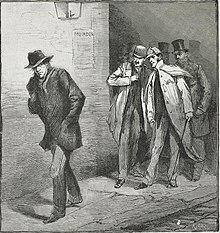
Serial killers tantalize, terrify and even entertain the public. Since at least the 1970s they have been frequent and chilling actors on center stage in the news and entertainment media. Massive and highly stylized news coverage of real-life serial killers such as David Berkowitz, the “Son of Sam,” Ted Bundy and Jeffrey Dahmer transforms them into ghoulish popular culture celebrities.
Similarly, fictional serial killers such as Hannibal “The Cannibal” Lecter in The Silence of the Lambs and the “Tooth Fairy” in the Red Dragon have also become popular culture icons. More recently, the tremendous success and acclaim of the Showtime television series Dexter and The Millennium Trilogy global media phenomenon based on author Stieg Larsson’s book The Girl with The Dragon Tattoo demonstrate how eager the public is to be frightened by serial killers. Interest in serial killers is hardly new. Public fascination with serial killers dates back to the late 1880s when a series of extremely brutal, unsolved prostitute murders occurred in the Whitechapel area of London, England, and those killings gained worldwide notoriety.
In the fall of 1888, a series of five grotesque murders were committed in London by an unknown individual who legend has it called himself Jack the Ripper in letters he allegedly sent to the London police and took credit for the crimes. Prior to the Jack the Ripper letters, the London newspapers called the unknown killer “Leather Apron” based on a suspicion that the killer was a local b Significantly, the Jack the Ripper murders represent the first rudimentary application of criminal profiling techniques. London physicians George Phillips and Thomas Bond used autopsy results and crime scene evidence in the fall of 1888 to make informed predictions about legendary serial killer Jack the Ripper's personality, behavioral characteristics and lifestyle. In his written report after examining the available forensic evidence, including the bodies, Dr. Thomas Bond concluded that “all five murders no doubt were committed by the same hand… the women must have been lying down when murdered and in every case the throat was cut first.” Moreover, Dr. Bond stated that Jack the Ripper had no medical training or knowledge of anatomy, despite the killer’s extensive cutting and mutilation of his victims. This bold statement by Dr. Bond directly opposed what law enforcement authorities had previously concluded—that Jack the Ripper was either a physician or had medical training due to the fact that he had removed internal organs from some of his victims. Dr. Bond reached his conclusion after noting that the gaping wounds inflicted by the Ripper were not consistent with the training of a medical expert or “even the technical knowledge of a butcher or horse slaughterer.” In Dr. Bond’s opinion, the murderer must have been “a man of solitary habits, subject to periodic attacks of homicidal and erotic mania, and the character of the mutilations possibly indicating satyriasis” or uncontrollable sexual desire.
The infamy of Jack the Ripper lives on. As noted by the Federal Bureau of Investigations (FBI) in its 2005 report titled Serial Murder: Multi-Disciplinary Perspectives for Investigators, the name Jack the Ripper has become synonymous with serial murder over the years. This case has spawned many legends and myths concerning serial homicide and the killers who commit them. More than 125 years after his killing spree abruptly ended without his capture, the murders of Jack the Ripper continue to haunt and tantalize the world. In many ways, the Ripper killings remain the greatest unsolved mystery of all time.
BY: E.KANMANI
super
ReplyDeleteawesome
ReplyDeletegood
ReplyDelete-RITHIKKA GB